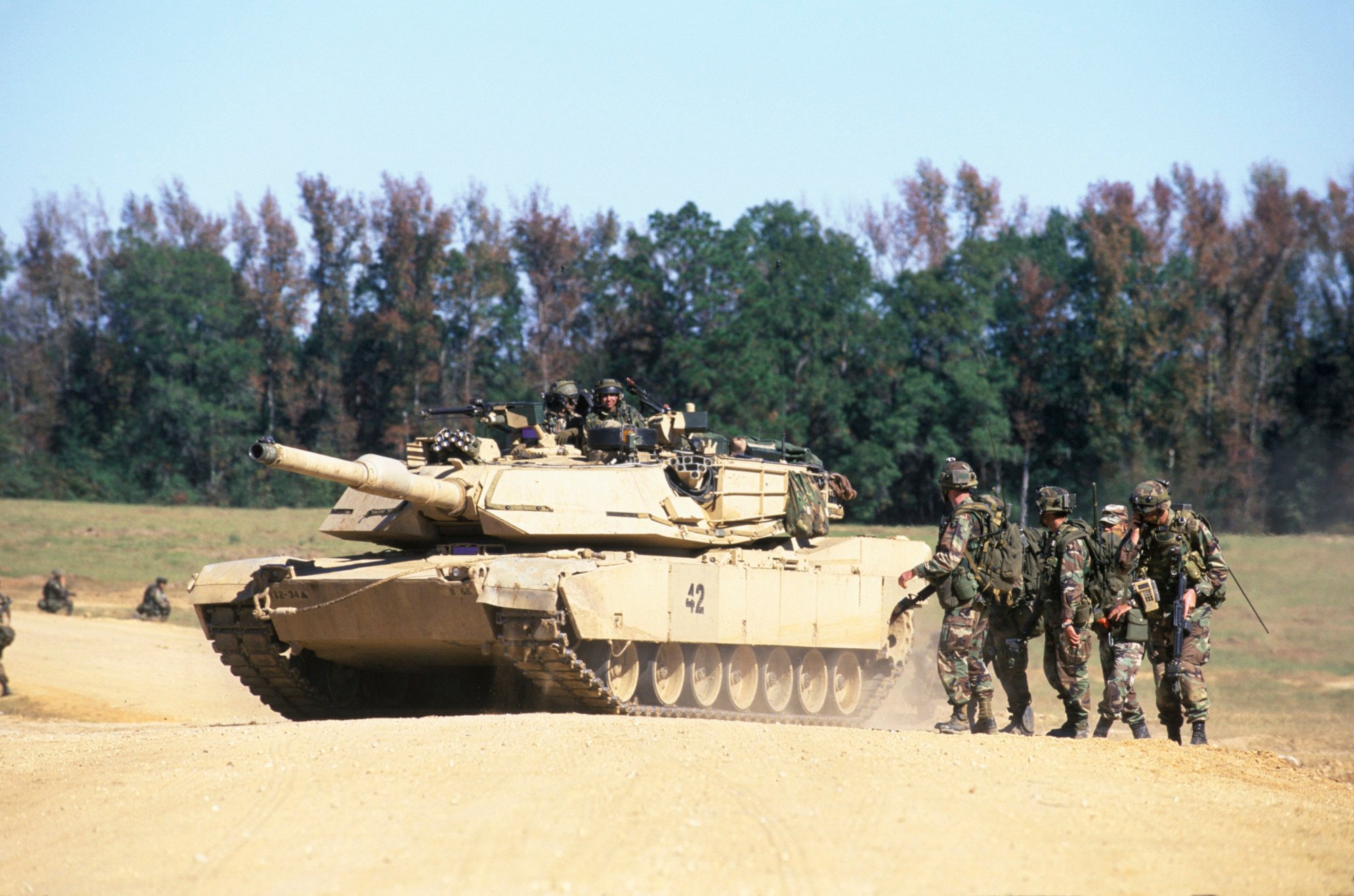
Kinetic energy weapon can break an American tank apart with a single shot: Chinese study
- Simulations by Chinese scientists have found a high-speed kinetic energy weapon weighing just 20kg could stop a US tank in its tracks
- While traditional anti-tank weapons need precision to be effective, kinetic weapons can cause lethal damage even just with grazing contact
They found that a solid sphere, weighing 20kg (44lb) and hurtling towards its target at about four times the speed of sound, could spell disaster for advanced tanks manufactured to US military standards.
The kinetic energy carried by such a projectile would be around 25 megajoules. This value may seem large, but when converted into electrical energy it is less than 7 kilowatt-hours, scarcely more than the energy it takes to cook two turkeys for Christmas.
But the research team, led by Huang Jie of the China Aerodynamics Research and Development Centre’s Hypervelocity Aerodynamic Institute, discovered during simulations that while the tank might have appeared unscathed on the outside, its inner workings were irreparably damaged.
Published on December 8 in the peer-reviewed journal Equipment Environmental Engineering, the team’s findings were a sober reminder of the fragility of traditional military hardware in the wake of new weapons technology.
“Under high-speed kinetic projectile impact, certain typical locations in the armoured target exhibit impact response spectrum lines with amplitudes at certain frequencies exceeding the safety limits recommended by the US military standard MIL-STD-810,” Huang’s team wrote.
“Components at these locations have a high probability of failure due to overload damage,” they said.
The research institute where Huang works is in Mianyang, Sichuan province, a hub for the development of hypersonic weapons – those that travel at speeds exceeding Mach 5. In the face of such high-speed attacks, enemy defence systems often do not have time to react.

Traditional anti-tank weapons do not have much need for speed. They primarily rely on gunpowder to explode upon hitting a tank, which generates tremendous thrust that propels a hard alloy rod or metal jet to penetrate the armour at a very small point, causing damage to personnel and equipment inside. However, if the armour is thick or the projectile hits the wrong location, the effectiveness can be greatly reduced.
But high-speed kinetic projectiles have the potential to achieve lethal damage even upon grazing contact, and their launching methods can be diverse.
While the mobile coil gun might have appeared primitive, just as the early tanks did, some military experts believed it to be a game-changer. If electricity replaces gunpowder as the driving force behind lethal weapons, the landscape of future warfare will never be the same.
China can find and kill the B-21 ‘Raider’ with hypersonic missiles: study
During their research, Huang’s team discovered that assessing the damage caused by kinetic projectiles was a far cry from evaluating conventional armour-piercing rounds. The latter can be tested using a piece of alloy armour, but kinetic projectile testing required consideration of the entire tank. That is because the shock wave generated by the impact travels through the entire vehicle in a highly complex manner, causing stress to concentrate in areas like bolts and leading to distortion or even fracture.
Tank crews often point the front of the vehicle towards the energy, as this section is designed to be the most rugged and able to withstand the most firepower. But a kinetic projectile hitting this section would send destructive stress into the tank’s interior, potentially causing catastrophic damage to its firepower capabilities.
“The grip of the tank gun stabiliser console can be shaken off, the wiring base of the console pulled out completely, all connections between the fire control computer and the turret severed, resulting in a substantial loss of firepower,” the researchers said.
Huang’s team did not discuss the impact on tank crews in their paper. However, according to a numerical simulation study conducted earlier this year by Dalian University of Technology, if an American M1 tank is hit head-on by a 10 megajoule hypersonic kinetic projectile that travels at seven times the speed of sound, the loader may suffer minor wounds, the gunner moderate wounds and the commander severe wounds, rendering them unable to execute combat operations.
The driver may even succumb to fatal wounds due to a chest impact of over 60 times the Earth’s gravitational force.


